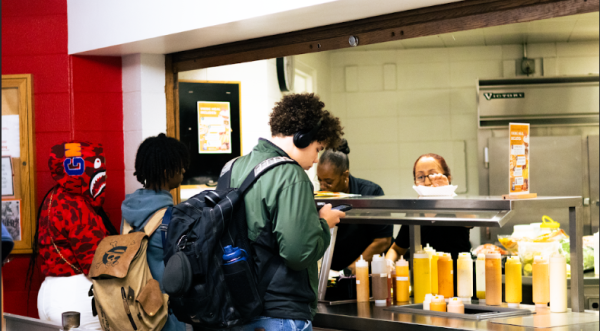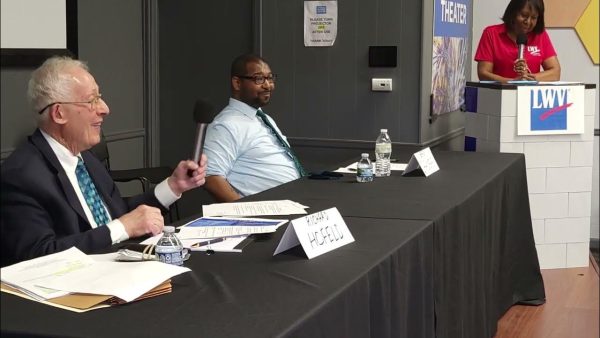Held in Check
Adjusting to PWI’s can be difficult transition
Our school may be a model for diversity, however, once students advance to higher education, this might no longer be the case.
“You sort of develop a sense of [being] an outsider because there’s not as many black people,” Notre Dame freshman Calvin Stringer said. “With that being said, I have met some great people here, but it is just harder to relate to kids that don’t come from similar backgrounds.”
Universities’ demographics reflect that of the country, which means they are predominantly white.
According to the National Center for Education Statistics, 14.7 percent of college students are black. That is a drastic change from high school, where blacks make up 67 percent of HF’s student body, according to Illinois Report Card.
With all of the attention college campuses are receiving lately regarding racial unrest, there is definitely a dilemma graduates here face once they leave for college: there is a stark difference from being a comfortable majority to a pretty small minority.
However, there are benefits to this.
“Growing up in a diverse high school allows you to see social issues differently and gives you the ability to connect with different cultures than your own,” Drake University freshman Morgan Bohlman said. “Something I believe to be healthy and important for young people to be able to do.’
At Drake, Bohlman finds it difficult to find students with this same experience. He says this keeps them from forming fully educated opinions concerning social issues.
Stringer says it doesn’t bother him that not many Notre Dame students understand his background.
“I’m accepting of the fact that many people here went to schools that didn’t have blacks,” Stringer said. “There are a few that went to schools similar to H-F and can understand where I’m coming from and it makes me feel more accepted.”
According to collegedata.com, blacks make up four percent of students at both Notre Dame and Drake. White students make up 79 percent and 74 percent, respectively.
Unawareness causes students to gravitate towards those similar to them, resulting in a separation on campus.
“I noticed that in the cafeteria, certain buildings or the quad, there’s black people over here and whites are over here,” SIUE freshman Paige Milenkoff said. “Whenever we have group projects, it’s always whites teaming up with whites and blacks with blacks.”
Like Bohlman and Milenkoff, Stringer graduated from HF earlier this year. He says that his race has spawned feelings of alienation on campus.
Meeting new people can be hard in general considering most students have maintained their friendships throughout grade school and high school, growing up with the same people.
However, when there’s a racial gap, it can be even harder.
“My friend group at H-F was very mixed; I had a lot of black friends,” Milenkoff said. “Here, I have a majority of white friends, but that’s not because of my choices.”
Iowa Wesleyan freshman Chazz Brown had to change a few things to make friends at his school.
“You saw less black people and more white people and I had to adjust all around. Normally when you go to different settings or hang out with your white friends, you change a little bit, in how you talk and how you present yourself. That’s how it is, but more constant,” Brown said. “I had to navigate and get a feel for how people are and what kind of person they were and what their background is and adjust to be cool with them.”
On the contrary, Stringer says that going to a predominantly white university is not a misfortune for him.
“[T]here is certainly [an] opportunity to meet people that come from a similar background here,” Stringer said. “At the same time, it provides an incentive to go out and meet people from different cultural backgrounds as well.”
Some students decide to attend Historically Black Colleges or Universities in order to avoid the pitfalls of most American colleges.
According to statistics provided by college counselor Brad Kain, about four percent of H-F seniors attended HBCUs last year.
Opposite of Stringer, Hampton University sophomore Makala Kusi said she chose to attend an HBCU because she wanted to network herself with other blacks.
“I wanted to be in a place of higher learning surrounded by beautiful black people being unapologetically black, ambitious, smart, etc,” Kusi said.
When asked how her life would be different if she attended a predominantly white school, Kusi said explicitly that she would hate it.
“Being there would be suffocating and I wouldn’t feel like I would be in a safe space or a place where people truly want to see me or people who look like me fully prosper,” Kusi said.






